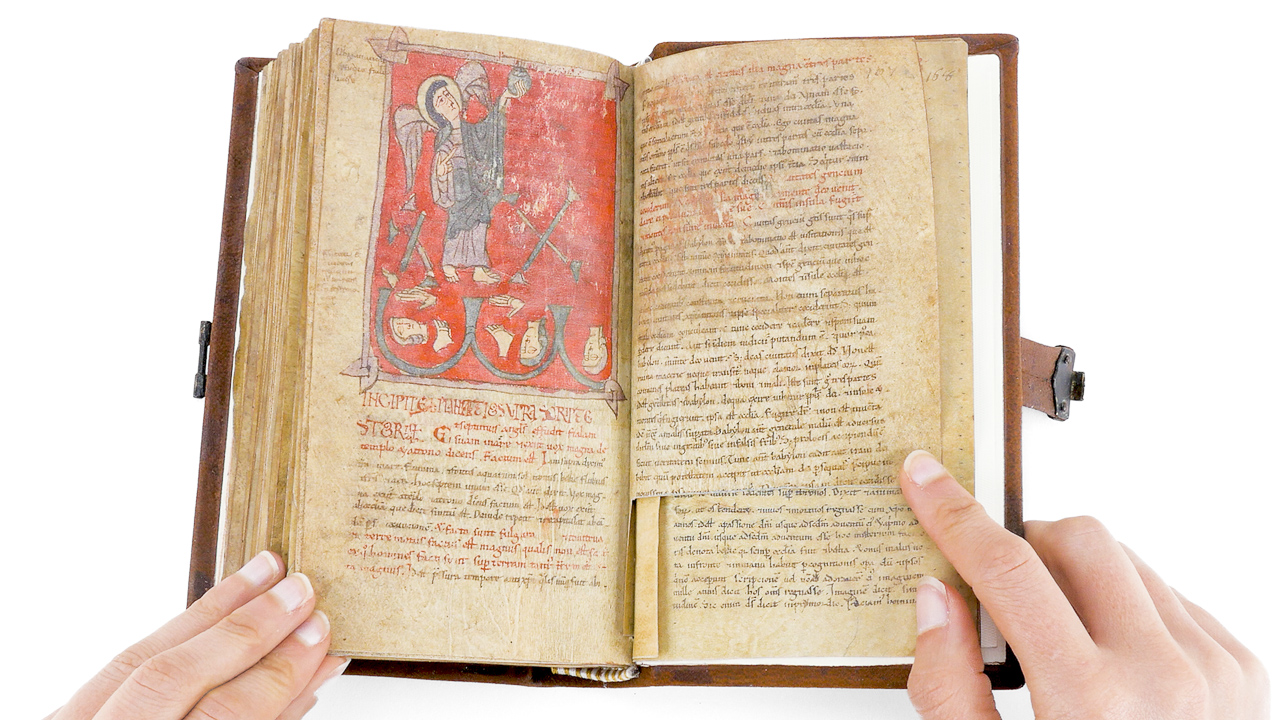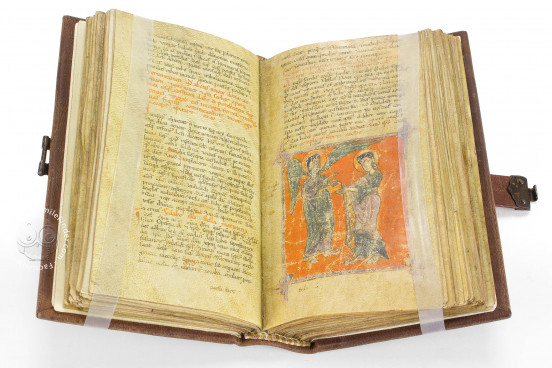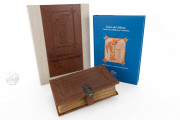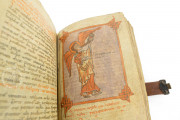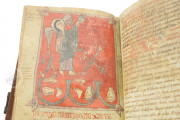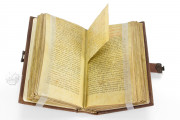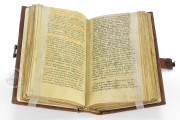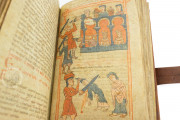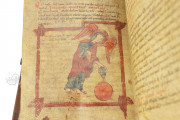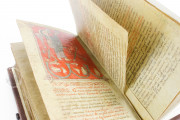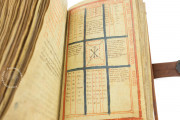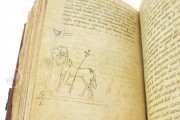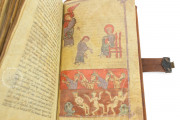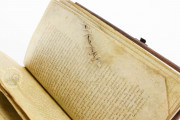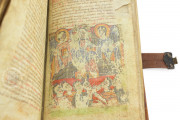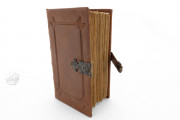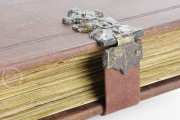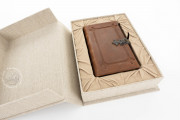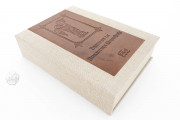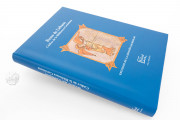The Corsini Codex is an incomplete and mutilated copy of the Christian biblical book of the Apocalypse with commentary by Beatus of Liébana and an anonymous commentary on the opening chapter of the Apocalypse. It is a diminutive, easily portable book, distinguishing it from all other illuminated manuscripts of the Beatus commentary. The manuscript was made at the Benedictine monastery of Saints Facundus and Primitivus at Sahagún (kingdom of León) in the twelfth century. The surviving leaves include seven miniatures in two distinct styles and one drawing.
The original program of illumination extended to as many as ninety miniatures. More than forty leaves are missing from the surviving portion, and some leaves have been mutilated—almost certainly when miniatures were excised. One of the surviving full-page miniatures (fol. 170r) is manifestly the right half of a composition that originally extended across two facing pages.
Two Styles of Painting
Six of the miniatures are by two artists working in a style characteristic of the art of the Sahagún monastery: silhouetted figures against pale fields of color or bare parchment. Their thin painted frames have interlace knots at the corners.
One miniature, the Appearance of Christ in the Clouds, is by a third painter. It is much bolder in palette, employing saturated red and blue. The overlapping figures have large, expressive hands, and the frame is thick and without interlace (fol. 155r).
Two Styles of Writing
The one miniature in a distinct style appears in a portion of the manuscript written in Visigothic Minuscule (fols. 144-156; the anonymous commentary on chapter 1). Most of the manuscript, with the text of the Beatus commentary, is written in the Transitional Script that supplanted Visigothic Minuscule in Iberia in the twelfth century (fols. 1-143 and 157-171).
The Corsini Beatus is an important witness to the coexisting scripts of twelfth-century northern Spain. Although most of the text is written in an international script, some of the text, the rubrics, and the picture inscriptions are in the Iberian scripts of the previous centuries.
Scrambled Text
The anonymous commentary (fols. 144-156) once appeared at the beginning of the manuscript, but with the pages in a different order. The Beatus text begins in medias res on fol. 1r and continues to fol. 143r. After two blank pages, the Beatus text continues on fol. 157v.
An Unusual Picture
The Corsini Codex includes a miniature of the Killing of the Two Witnesses by the Antichrist, a subject rarely depicted. The composition of the corresponding painting in the Burgo de Osma Codex, made at Sahagún in 1086, is nearly identical, and the Corsini miniature (fol. 126r) was probably copied directly or indirectly from the earlier book.
Taken to Italy by a Catholic Cardinal
Gaspar de Guzmán (1587-1645), Count-Duke of Olivares, and Juan Lucas Cortés (d. 1701) were seventeenth-century owners of the manuscript. Francesco Acquaviva d'Aragona (1665-1725) probably purchased the book from Cortés in 1701, when Cardinal Acquaviva was serving as papal ambassador to Spain, and brought it to Italy. Neri Maria Corsini (1685-1770) acquired it after Acquaviva's death and before 1738. His descendent Tommaso Corsini (1835-1919) donated the family collection in 1883 to the Accademia Nazionale Reale dei Lincei (now Accademia Nazionale dei Lincei e Corsiniana).
_____
For more information on the Beatus model, read our blog article by Amy R. Miller (PhD, Medieval Art History, University of Toronto).
We have 1 facsimile edition of the manuscript "Beatus of Liébana - Corsini Codex": Beato de la Biblioteca Corsiniana facsimile edition, published by Siloé, arte y bibliofilia, 2010
Request Info / Price
